From The Peopling of New York City
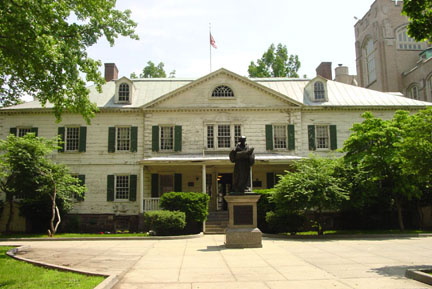
Behind Erasmus’ Iron Door
A great Gothic building along Flatbush road holds 200 years of stories untold,
Of a man who waited 68 years to cross his tassel over,
Bernard was a World War vet before he held his high school diploma,
Of a student who stayed in school because he dreamed of becoming a lawyer,
Carvan didn't drop out because he had hopes for the future.
What about the teachers who paved the way?
The principals who first influenced the school that we see today,
Kellogg and Gunnison, Who were they and how did they help this story unfold?
Answers to these questions their pages hold.
Many know the stories of the broken Erasmus Hall,
Of the violence that once took place behind the school's walls,
Follow the lives of Five Dutchmen and the real story will be told,
The story of some who strived or failed, and the administration's role.
200 years of stories we did not know,
This poem holds secrets held behind Erasmus iron doors.
--Jpeterkin 05:10, 9 May 2009 (UTC)
Why I Chose The Block Containing Erasmus Hall
When I first came to New York City some five years ago I was walking down Flatbush Ave and came across the gigantic building that is Erasmus Hall. At first I thought it was a church until I took a closer look at the plaque on the building, which stated that Erasmus Hall was a High School. I thought nothing more of it and continued on my journey to my destination. I never would have thought that Erasmus Hall would be my destination for the next four years. I attended Science Technology and Research (S.T.A.R.) Early College High School at Erasmus Hall. At first I hated the building with so many hallways and staircases, cafeterias and gymnasiums it was hard not to get lost. After a while though, the school became a home and my appreciation of the buildings and their history began to grow. I couldn’t help but stop to think that I was walking within the same halls that Barbra Streisand and Joseph Barbera (Tom and Jerry cartoonist) walked. To have had the privilege to be a member of an institution with so much history, a school that was originally founded by such historically prominent people such as John Jay and Alexander Hamilton was and still is unbelievable.
However, the history that most people remember today is how terrible the school was in the 1990s. Whenever I told someone that I was attending Erasmus Hall the response was something along the lines of, “Really? That’s a bad school.” With this research project I aspire to look back on the rich history of Erasmus Hall and the neighborhood that houses the school with the hopes that I can remind people of the good that the school has been apart of, the bad times it has endured and the good that it has become today.
The history of Erasmus is rich and deep and though the story of the school has been told many different times, the history I hope to tell is not just going to be one of facts and numbers but one of personal histories and struggles. Those stories unfolded in what I consider to be one of the most architecturally aesthetic buildings on Flatbush, Erasmus Hall.
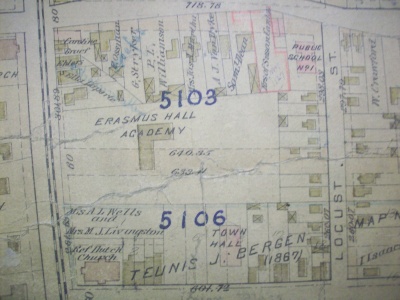
This is a Map of Brooklyn that depicts Erasmus Hall and the surrounding area.
[2] The Building
The campus comprises of four multi-story buildings encircling the quad. These building were constructed in the spirit of Greco-Roman architecture. Consequently, there are carvings of angels and faces on many of the walls as well as many arches and large towers equipped with crosses at the top. To the south side of the quad (Flatbush side) is the very first building that housed Erasmus high school. This quaint, green and white, two-story building served as the school for more than two centuries. It sits behind a statue of the schools namesake, Desiderius Erasmus. The statue of Erasmus is made of marble and depicts him reading a book. In the spirit of tradition many Erasmus students toss a penny into the open book before exams because as legend tells it, if the penny stays in the book the student who tossed it is ensured a passing grade. Unfortunately, most pennies land in the book then roll off to the other side.
In 1978 the original building and the surrounding structures were listed among New York City’s Landmarks and were name in the National Register of Historic Places.[3] Despite the notoriety of the original building and the fortune of the school most popular Alumni, the quaint little building at the center of the Quad has not been well preserved and debates over the neglect of the building have even made it onto local news. According to the Alumni association “Five years have passed since we started the fight to restore the Academy building. We are no closer now than we were then to saving the treasure.
We have explored every avenue and have finally come to the point where we need the services of an attorney to take on City Hall and the DOE.”[4] Apparently the Alumni association hopes to sue the Department of Education (DOE) and City Hall for funds to refurbish the now dilapidated and asbestos ridden Academy building. So far, minor renovations have taken place. However, the true treasure of Erasmus Hall still remains vulnerable to the elements.
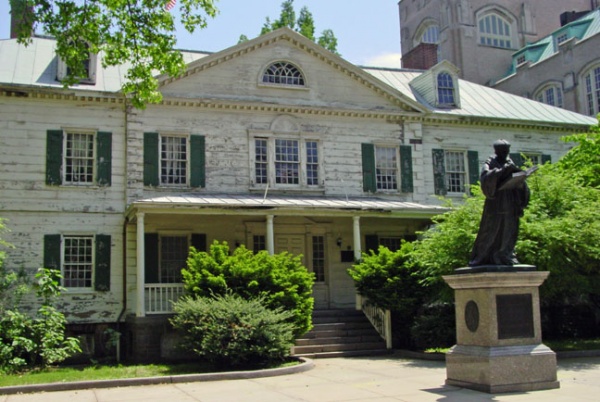
Picture showing the dilapidation of the Academy building in a plea for help.
[5] Erasmus Hall: A History of Success and Turmoil
For the past 200 years people who have traveled Flatbush Avenue between Church and Snyder Avenues, whether by foot, horse and buggy or motor vehicle have passed by Erasmus Hall. Though they all passed by the same institution the state of the school has varied much throughout its history. The people who walked and lived within the walls of an institution are essential because these people are ultimately the ones who make the organization into what it is. Follow the lives of Five Dutchmen(the name given to Erasmus Hall students) from different points in history and you will have followed the true legacy of Erasmus Hall. The legacy of an administration that shaped and in some cases failed its students.
Established in 1787 Erasmus Hall Academy was founded under the leadership of Reverend John H. Livingston of the Reform Dutch Church of Flatbush. As a private all-boys secondary school, Erasmus Hall Academy commenced with twenty-six white students. However, the educational reputation of the school soon spread all over the world and high-ranking students from various places (including the Caribbean and France) began to flock to Erasmus Hall Academy.[6]For a while, an established board of trustees efficiently ran the all white school, with finances coming from the student tuition and funds intended for the common schools of Flatbush. In 1823, the board of trustees elected Jonathan Kellogg principal, a decision that would prove to be essential to the future of women at Erasmus as well as for the schools general reputation in the community.[7] Under Jonathan Kellogg the community embraced the school and it became the center of community activities.
Then in 1895, the board began to experience financial difficulties and decided to offer the building and land to the City of Brooklyn to be utilized as a free public High School. The official handing over of the school, which was renamed Erasmus Hall High School occurred on September 14, 1896. One month later, on October 14, the formal transfer of Erasmus Hall from the Dutch Church of Flatbush to the City of Brooklyn took place. Thus, Erasmus Hall entered the public school system with 150 students under the leadership of principal Walter B Gunnison.[8]Gunnison believed that it was the school’s job to meet students wherever they were, help them develop the skills they had and acquire new ones. It was under his leadership that students such as Bernard Warshauer (who interestingly enough graduated in 1916 but didn’t earn his diploma until 1984) strove in the educational system at Erasmus.
Unfortunately, Erasmus Hall did not remain on the educational track established by Jonathan Kellogg and Walter B Gunnison. As a matter of fact did not remain an all white school either. By 1976 Erasmus Hall was eighty-five percent Black and Hispanic. It is often stated that this influx of minorities in the student body was due to the emigration of middle class Jews that began in 1960 when Black and Hispanic families then filled the vacancies they left. [9] However, when I did a bit more research it became evident to me that this was not the sole reason for the segregation of Erasmus Hall. In 1976, when New York State Education Commissioner Edwald B. Nyquist reversed his original ruling regarding the integration of high schools he sealed the fate of the demographic of Erasmus Hall. Having originally ruled that all necessary steps must be taken to integrate Erasmus, Nyquist retracted. He stated, “where the demographic projections indicate that a nonwhite majority will continually increase with the passage of time it is imperative re-segregation of integrated schools be avoid.” [10] According to the parents, “the board contributed to the white decline by creating new attendance zones for other schools and through other ‘diversionary’ tactics.” [11] In other words the zoning tactics used by the Board of Education forced Erasmus to be a minority school by excluding nearby white neighborhoods from the school’s zone. Despite the fact that Erasmus, under the suggestion of Nyquist, developed “magnet” programs like art and music to entice other racial groups, the school’s student body became increasingly proliferated by minorities and continued to attain low graduation rates. By the 1980s, the school’s graduation rate was only about 50 percent.[12] As the stories of Tony Marcano (a journalist who went undercover at Erasmus Hall) and Carvan Jones indicated, this was a result not only of the student’s attitude towards getting an education but also of the administrations unwillingness and inability to teach and challenge students.
A glimpse into the lives of a few principals and pass pupils of the school reflects the tumultuous history of Erasmus Hall.
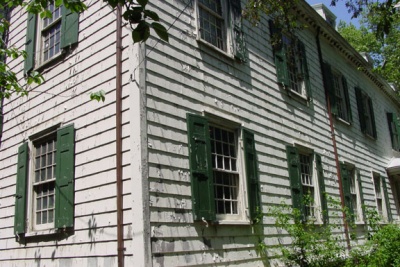
Side view of the Academy building, 2007.
[13]
The Dutchmen
Jonathan Kellogg
Jonathan Kellogg spent his life working as a professor in various schools and academies according to the biographical sketched for the graduates of Yale.
[14] In 1823, he was elected principal of Erasmus Hall academy by the board of trustees. During his first years as principal Kellogg established the female department of Erasmus Hall and enlisted a female instructress named Martha Johns to teach the girls.
[15]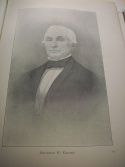
[16] Principal Jonathan Kellogg picture from the Chronicles of Erasmus Hall)
It was because of Kellogg’s determination to have equal educational opportunities for males and females that 100 years later Jeannette Fox was able to graduate from Erasmus Hall. In 1935, Fox received her doctorate in mathematics from Yale University and went on to teach part time at Brooklyn College. She later became associated with CCNY (later CUNY) where she was “in charge of most of the courses related to the preparation of teachers and served as the department representative to the school of education, as well as chairman of the department committee on teacher preparation.”
[17] This is one example of how the actions of one member of the administration at Erasmus Hall affected the lives of so many others. If it were not for Kellogg, who knows what path Fox’s life would have ended up on and without Fox we can only speculate as to what would have happened in the lives of her students. Another principal who effected change in Erasmus Hall was Walter B. Gunnison.
Walter B. Gunnison
Walter B. Gunnison was the first principal of Erasmus Hall High School. Gunnison believed that education was essential and that the way in which we go about trying to impart knowledge to others determined the degree to which they learn and retain that information. According to “The Chronicles”, “he believed that the public schools were for the purpose of serving the pupils and not for maintaining hard and fast courses of study and a lock-step system of promotion.”
[18] Gunnison believed that the system of education should meet the student where he was and adapt the form of teaching to each students learning style. Apparently, principal Gunnison’s methods worked because Erasmus Hall and its students strove for the twenty years in which he was the institution’s leader.
[19] 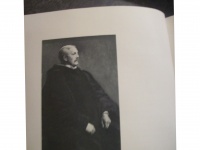
[20] The First principal of Erasmus Hall High School Walter B. Gunnison
In late 1909, Walter Gunnison fell ill and was sent on a retreat to Europe by the General Organization and teachers of Erasmus Hall that loved him so much. Unfortunately, in 1910, Gunnison fell ill again and decided to move to his house in Berkshire with his wife, it was there that he died at age sixty-four still holding the title of principal of Erasmus Hall High School. A title that allowed him to affect the lives of many and challenge the ways in which education was imparted.[21] One student who got his education under Gunnison leadership was Bernard Warshauer.
Bernard Warshauer
Bernard Warshauer was a student at Erasmus Hall in the last years of Walter B. Gunnison’s administration. He was set to graduate in 1916 and he did or at least he thought he did. Sometime along the course of his life in advertising and printing, Warshauer called the school to check his records and found that he was not a high school graduate after all. To his surprise, he was informed that in 1916 he had been awarded a certificate of completion and not a high school diploma because he was lacking a mere half of a credit![22] A devout believer in education, Bernard was adamant about earning his high school diploma.[23]
In 1984, Bernard made a deal with the principal of Erasmus Hall high school, Stanley Saretsky. They decided that if Bernard wrote a paper he would be awarded the half of a credit he needed to earn his diploma. Titled “ An assignment to do in ’84 what I didn’t do in ‘16”, Bernard used this paper to reflect on his years in high school and his life since being a student at Erasmus.[24] So on June 20, 1984, World War One veteran, husband, father and grandfather, Bernard Warshauer became a graduate of Erasmus hall.[25] Sixty-eight years after his final year in high school, Bernard was finally the holder of a high school diploma.
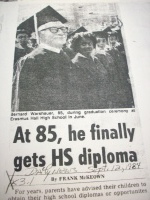
[26] Bernard Warshauer pictured walking with the class of 1984 after receiving his diploma(picture by the Daily News, 1984)
When asked about the state of his high school he had this to say, "When I went to the school I was very disturbed to see and hear about so many students who planned on dropping out. I have a great deal of pride in the school, and feel very strong about education…Erasmus is a great school with a great history. I am trying to keep that history alive.”
[27] Three years later Tony Marcano and Carvan Jones stories would prove that Bernard had a right to be concerned about the drop out rate at Erasmus Hall.
Tony Marcano and Carvan Jones
The stories of Tony Marcano and Carvan Jones told us of an administration and a government that was not working for its students. They informed us of an uncaring and failing education system that existed in Erasmus Hall and New York City in the 1980s and into the twenty-first century.
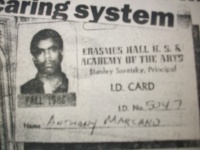
[28] Tony Marcano ID card issued in 1987 when he went undercover to investigate the drop out rates at Erasmus Hall. (picture by the Daily News, 1987)
Tony Marcano was a reporter for the Daily News. In 1987, he decided to go undercover as a student at Erasmus Hall. What he found in his three months as a student and more importantly on his last day as a student, explained why it was easy for so many students to fail at their high school career. Mr. Marcano enrolled himself in five classes at Erasmus Hall High School in 1987. He showed up to his classes in the beginning but toward the end he started arriving to class late and eventually stopped showing up at all. Based on his testimony, no one ever asked him what was wrong or inquired as to why he was missing so many classes. He did recall receiving cards in the mail from the attendance office and a note from a truancy officer asking his parents to explain his absences. However, he never responded to any of these letters and no one ever followed up on Marcano’s truancy.[29]
When Tony Marcano walked into Erasmus Hall and told his teachers he was planning on dropping out many of them just said okay. His most optimistic teacher said, “You’re a physics student. If you complete the rest of the terms assignments, I won’t fail you. The GED is elementary. Why do that?” and left it at that.[30] No one honestly tried to get him to stay. Sadly enough, when he walked into the principal’s office and told him his intention, the principal asked Tony why and before Tony could respond the principal left the room.
That afternoon before the last bell rang, Tony Marcano pushed open the double doors of Erasmus Hall that opened onto Flatbush Avenue and walked into the harsh and uncaring world that awaited most high school dropouts. That day, Tony became another statistic. He became a failure of “a system that too often is sluggish, disorderly and squeezed financially ⎯ unable or unwilling to teach.”[31]When asked about the situation at Erasmus Hall and city schools in general, Robert F Wagner Jr., the president of the Board of Education commented, “ Not all kids are challenged the way we should challenge them. We and that means everyone in the system, must adapt to a new set of needs.”[32] Yet it seemed that he never meant that it was time for the system to meet the needs of the students it was designed to serve.
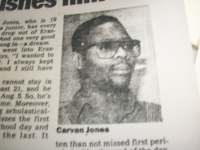
[33] Carvan Jones pictured by the Daily News in 1987.
Tony Marcano was no exceptional case. Erasmus Hall had lost half of its student body in a matter of two years. One student who came close to leaving was 17-year-old Carvan Jones. Carvan Jones had moved out of his mother’s house and was working to support himself while going to school. However, he eventually had to move back home to Bed-Stuy to live with his mother and sisters in order to avoid having to drop out of school. According to Carvan, the only thing that kept him from dropping out was his dream to be a lawyer. One can’t help but see that the administration at Erasmus was failing. It was the administrations job to help these vulnerable students; it was the teachers’ job to keep their students engaged, thinking and interested but it seemed evident that they both failed.[34]
The Conclusion: Erasmus Hall Today
Today Blacks and Hispanics continue to dominate the student body, although on occasion one may encounter a White or Asians student roaming the halls, which now houses over seven different high schools. The schools include; Science Technology and Research (S.T.A.R) Early College High School, High School for Service and Learning (H.S.S.L), and the Academy of Hospitality and Tourism High School (A.O.T.H). The segmentation of the Campus was done with the intention of controlling and protecting the vast amount of students that attend the schools. As the names of the high schools suggested, each of the new schools, much like each wing of the previous school, specializes in a particular subject area, in the hopes of strengthening the skills of those students who have expressed an interest in those areas, while giving them a general high school education. Thereby returning to the educational plan that Gunnison originally set for the school,meeting the students where they are and working to protect their student’s rights to an education.Currently, graduation rates are on the rise and it seems that the administration found its' faults and corrected them. However, if we were to scratch just beneath the surface we would find that although drop out rates (which count against graduation rates and therefore lower them) are decreasing, dismissal rates, which do not negatively impact the schools statistical reputation, are on the rise. I hope that the system has not simply found a way to hide its' problems rather than correct them. Erasmus it seems is once again experiencing a period of success, it is my hope that the school doesn't repeat the cycle and fall back into a period turmoil.
Erasmus Hall High School: A Walk Down the Block
Find out more about the author Janelle Peterkin
Notes
- ↑ Erasmus Hall High School Alumni Association,"The Erasmus Hall Academy 216 Years Old and Still Standing - Barely Erasmus Hall Alumni Association Accessed March29,2009.
- ↑ "Section 16 5040 to 5108: Part of the Town of Flatbush King's County," Robin's Atlas King's County[ Special Collections, Brooklyn College Library, Brooklyn, New York].
- ↑ Landmarks Preservation Commission.June 24, 2003, Designation List 348
LP- 2130[Brooklyn Collections,Central Library,Brooklyn Public Library]
- ↑ “Crisis at Erasmus” Erasmus Alumni association. http://www.erasmushall.org/aehhs.01aCA.html (Accessed March 24,09 )
- ↑ Erasmus Hall High School Alumni Association,"The Erasmus Hall Academy 216 Years Old and Still Standing - Barely Erasmus Hall Alumni AssociationAccessed March29,2009
- ↑ Chronicles of Erasmus Hall. Brooklyn, NY: The General Organization Erasmus Hall High School, 1906. 45[Brooklyn Archives, Brooklyn College.]
- ↑ Chronicles of Erasmus Hall (The General Organization Erasmus Hall High School, 1906), 65.[BC Archives]
- ↑ The Chronicles: A History of Erasmus Hall High School from 1906 to 1937 ( The General Organization Erasmus Hall High school, 1937), 22[BC Archives]
- ↑ Keith Moore, “Nyquist to Board: Boost Integration At Erasmus Hall,” Daily News December 23, 1975. 33[Brooklyn Collections Brooklyn Public Library Central Branch]
- ↑ Leonard Burner, “Nyquist Withdraws Integration orders on 2 schools,” N.Y. Times May21, 1976. 4[Brooklyn Collections Brooklyn Public Library Central Branch]
- ↑ Keith Moore, “Nyquist to Board: Boost Integration At Erasmus Hall,” Daily News December 23, 1975. 33[Brooklyn Collections Brooklyn Public Library Central Branch]
- ↑ Tony Marcano, "Class Acts," Daily News, May 5, 1987[Brooklyn Collections,Central Library,Brooklyn Public Library]
- ↑ Erasmus Hall High School Alumni Association,"The Erasmus Hall Academy 216 Years Old and Still Standing - Barely Erasmus Hall Alumni AssociationAccessed March29,2009
- ↑ Franklin Bowditch Dexter. Biographical sketches of the graduates of Yale College,598.
- ↑ Chronicles of Erasmus Hall (The General Organization Erasmus Hall High School, 1906), 65[BC Archives]
- ↑ Chronicles of Erasmus Hall (The General Organization Erasmus Hall High School, 1906), 65[BC Archives]
- ↑ Judy Green and Jeanne Laduke,Supplementary Material for Pioneering Women in American Mathematics: Pre-1940 PhD’s. www.ams.org/bookpages/hmath-34/PioneeringWomen.pdf (accessed April 24, 2009)
- ↑ The Chronicles: A History of Erasmus Hall High School from 1906 to 1937(The General Organization Erasmus Hall High School, 1937), 22.[BC Archives]
- ↑ The Chronicles: A History of Erasmus Hall High School from 1906 to 1937(The General Organization Erasmus Hall High School, 1937), 22.[BC Archives]
- ↑ The Chronicles: A History of Erasmus Hall High School from 1906 to 1937(The General Organization Erasmus Hall High School, 1937), 23[BC Archives]
- ↑ The Chronicles: A History of Erasmus Hall High School from 1906 to 1937(The General Organization Erasmus Hall High School, 1937), 23[BC Archives].
- ↑ Frank McKeown, " At 85, He finally gets HS Dipolma,"Daily News, Sept 12, 1984[Brooklyn Collections Brooklyn Public Library Central Branch]
- ↑ Bill Farrell, " He had to pitch for his diploma," Daily News, March 17, 1984[Brooklyn Collections Brooklyn Public Library Central Branch]
- ↑ Bill Farrell, " He had to pitch for his diploma," Daily News, March 17, 1984[Brooklyn Collections Brooklyn Public Library Central Branch]
- ↑ Frank McKeown, "Bernard’s a grad-at last!" Daily News, June 21, 1984[Brooklyn Collections Brooklyn Public Library Central Branch]
- ↑ Frank McKeown, " At 85, He finally gets HS Diploma,"Daily News, Sept 12, 1984.[Brooklyn Collections Brooklyn Public Library Central Branch]
- ↑ Bill Farrell, " He had to pitch for his diploma," Daily News, March 17, 1984[Brooklyn Collections Brooklyn Public Library Central Branch]
- ↑ Tony Marcano, "‘Bye, Dropout : our ‘student’ becomes another statistic in an uncaring system," Daily News, May 6,1987.[Brooklyn Collections Brooklyn Public Library Central Branch]
- ↑ Tony Marcano, "Class Acts," Daily News, May 5, 1987[Brooklyn Collections Brooklyn Public Library Central Branch]
- ↑ Tony Marcano, "‘Bye, Dropout : our ‘student’ becomes another statistic in an uncaring system," Daily News, May 6,1987.[Brooklyn Collections Brooklyn Public Library Central Branch]
- ↑ Tony Marcano," Class Acts,"Daily News, May 5, 1987.[Brooklyn Collections Brooklyn Public Library Central Branch]
- ↑ Tony Marcano," Class Acts,"Daily News, May 5, 1987.[Brooklyn Collections Brooklyn Public Library Central Branch]
- ↑ Tony Marcano, "‘Bye, Dropout : our ‘student’ becomes another statistic in an uncaring system," Daily News, May 6,1987.[Brooklyn Collections Brooklyn Public Library Central Branch]
- ↑ Tony Marcano, "‘Bye, Dropout : our ‘student’ becomes another statistic in an uncaring system," Daily News, May 6,1987.[Brooklyn Collections Brooklyn Public Library Central Branch]









